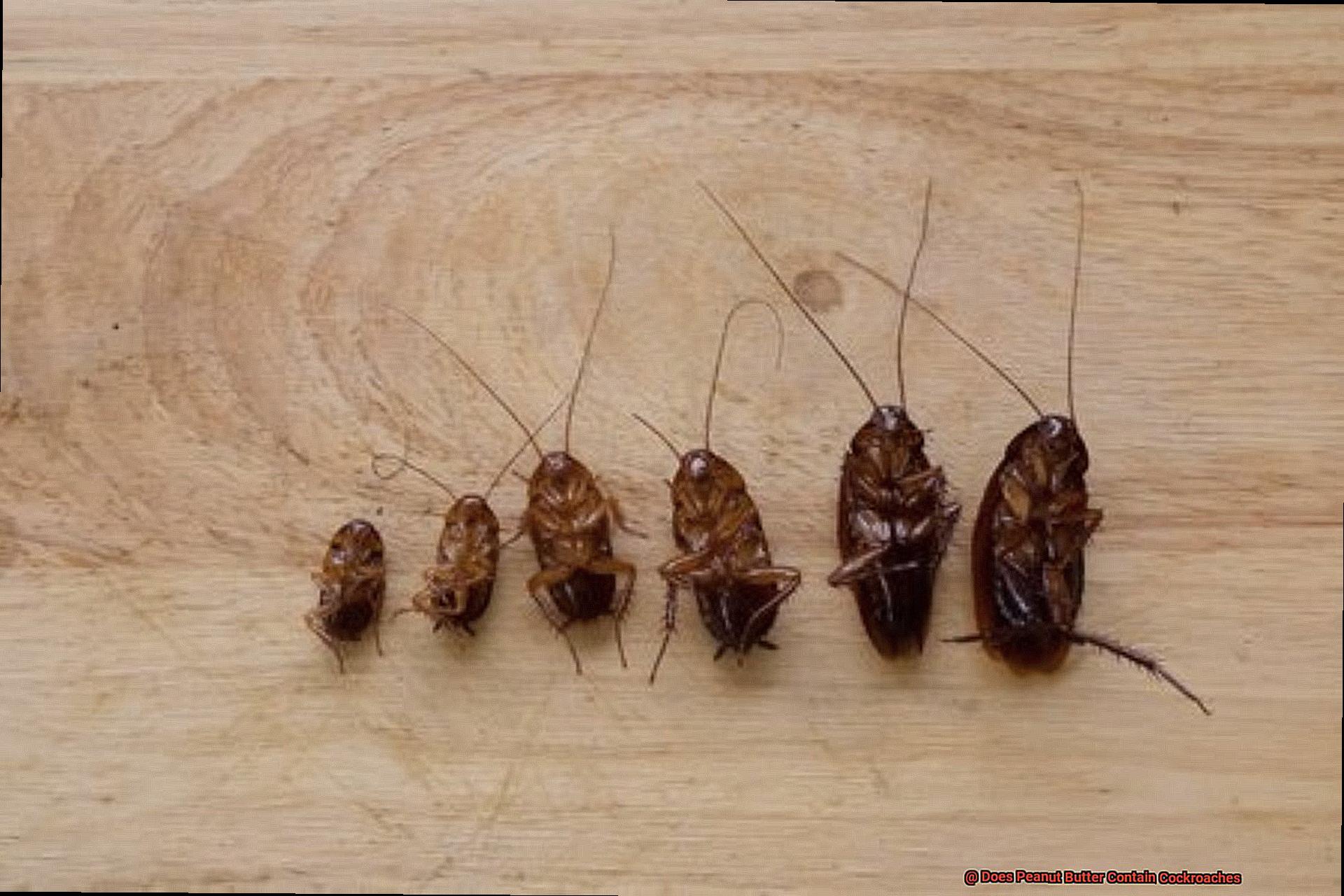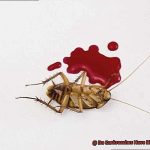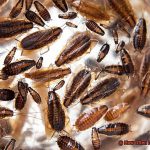Imagine this: you’re about to indulge in a scrumptious PBandJ sandwich when you hear a rumor that peanut butter contains cockroaches. Wait, what?. Could it be true? Have you been munching on these creepy critters all along?
Before you swear off peanut butter forever, let’s get to the bottom of this. The buzz about cockroaches in peanut butter isn’t entirely unfounded, but don’t panic just yet.
Firstly, it’s worth noting that finding cockroaches in your peanut butter jar is not a common occurrence. However, it’s not unheard of either – after all, these pests are attracted to food and peanut butter is no exception. In fact, it’s a popular bait used for trapping them in homes and buildings.
Secondly, the FDA has strict regulations in place to prevent any contamination of our beloved nutty spread. Peanut butter manufacturers must follow rigorous cleanliness and inspection protocols to ensure their products are safe for consumption.
So, does peanut butter contain cockroaches? The answer is potentially yes, but highly unlikely. Keep reading to discover how these sneaky bugs can infiltrate your jars and what measures you can take to keep them at bay.
What is Peanut Butter?
Contents
- 1 What is Peanut Butter?
- 2 Attraction of Cockroaches to Peanut Butter
- 3 FDA Guidelines for Insect Parts in Food Products
- 4 Quality Control Measures by Reputable Peanut Butter Manufacturers
- 5 Is it Possible for Cockroaches to be Present in Peanut Butter?
- 6 Potential Health Risks from Consuming Cockroach-Contaminated Peanut Butter
- 7 Conclusion
Peanut butter is a wonder spread that has been around for centuries. It’s made from ground roasted peanuts and has a smooth, creamy texture that makes it perfect for sandwiches, snacks, or as an ingredient in various recipes. But what makes peanut butter so special, and how did it come to be?
The history of peanut butter can be traced back to the ancient Incas and Aztecs who used peanuts to make a paste-like substance. However, the modern version of peanut butter was invented by a Canadian named Marcellus Gilmore Edson in 188Dr. John Harvey Kellogg then produced the first commercial peanut butter brand in 1895.
Today, peanut butter comes in different varieties, including smooth, crunchy, and extra crunchy. Some brands may contain additional ingredients such as salt, sugar, and oil to enhance the flavor and texture. Peanut butter is also available in various forms, such as natural, organic, and low-fat options.
But peanut butter isn’t just tasty; it’s also packed with nutrients. It’s high in protein, healthy fats, and essential vitamins and minerals that your body needs to function properly. Peanut butter is a great source of energy that can help you power through your day.
However, some people worry about the potential presence of cockroaches in peanut butter due to the insects’ attraction to peanuts during the harvesting and storage process.
While this is a valid concern, reputable peanut butter manufacturers take steps to ensure their products are free from contamination by insects or other pests.
They implement strict quality control measures and conduct regular inspections of their facilities to ensure their products meet FDA standards for safety.
Attraction of Cockroaches to Peanut Butter
Cockroaches are notorious for their love of sweet and oily foods, making peanut butter a prime target for these resilient pests.
But what makes peanut butter so irresistible to cockroaches? Well, it’s all about the high levels of fat, protein, and sugar – all of which are essential nutrients for these creepy crawlies. Not to mention the sweet scent of peanut butter that can be detected by their unique sense of smell from a considerable distance.
Cockroaches will go to great lengths to reach the source of the aroma, climbing walls, crawling through cracks, and squeezing through tight spaces. But it’s not just peanut butter that attracts them – they also have a fondness for chocolate, honey, bacon grease, and any food crumbs or spills left on surfaces.
To keep cockroaches away and reduce their attraction to peanut butter, it’s crucial to keep your kitchen clean and free of food debris. Regularly wiping down countertops and surfaces with soap and water removes any lingering crumbs that could attract these pests.
Storing all food items in sealed containers, including peanut butter jars, is also important to prevent cockroaches from accessing them.
FDA Guidelines for Insect Parts in Food Products
It may not be the most appetizing topic, but it’s an important aspect of food safety.
Under section 402(a)(3) of the Federal Food, Drug, and Cosmetic Act, the FDA is authorized to establish maximum levels of natural or unavoidable defects in foods that do not present a health hazard. This includes insect parts in food products. However, before you start worrying about what you’re eating, rest assured that the FDA has created a Defect Levels Handbook that outlines the maximum levels of insect filth and other natural contaminants allowed in various foods.
For instance, did you know that the FDA allows peanut butter to contain an average of 30 or more insect fragments per 100 grams? While this might sound unsettling, these levels are considered safe for consumption and pose no health hazard.
But peanut butter manufacturers must comply with Good Manufacturing Practices (GMPs) by law to ensure their products’ safety and quality. This means implementing measures to prevent contamination by insects and other pests during processing and storage.
We can also take steps to minimize the risk of consuming insect fragments in our food. For example, visually inspecting food products before consumption, storing food properly to prevent infestation, and reporting any concerns about product quality or safety to the manufacturer or the FDA.
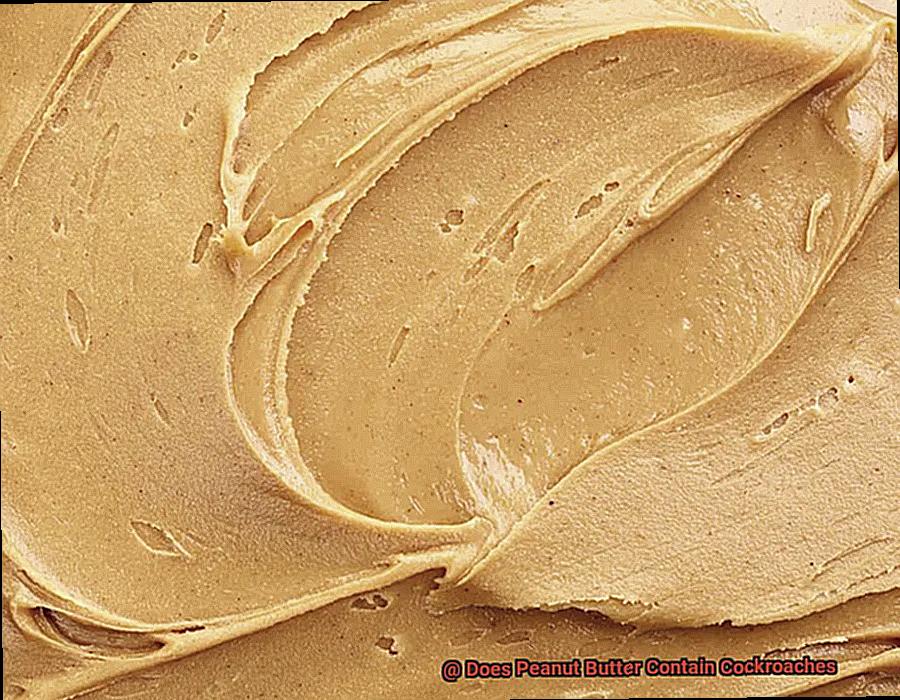
While the thought of ingesting insect parts in our food may make us cringe a bit, remember that there are guidelines in place to keep us safe and healthy.
Quality Control Measures by Reputable Peanut Butter Manufacturers
First, reputable peanut butter manufacturers implement a Hazard Analysis and Critical Control Points (HACCP) program. This program is a comprehensive approach designed to identify potential hazards in the production process, determine critical control points where those hazards can be controlled, and establish procedures to monitor those points. By implementing this program, manufacturers can prevent contamination from occurring in the first place.

In addition to HACCP, these manufacturers also conduct regular inspections and tests on their raw materials and finished products. Raw peanuts are tested for aflatoxins, which can be produced by molds that grow on peanuts and can cause liver cancer. Finished products are tested for bacterial contamination, such as Salmonella and E. coli, which can cause serious illness. By testing both raw materials and finished products, manufacturers can catch any issues before they reach consumers.
But it doesn’t stop there – hygiene practices are also crucial in preventing contamination. Reputable manufacturers require employees to wear protective clothing and wash their hands frequently. They also regularly clean and sanitize equipment and surfaces to prevent the spread of contaminants. By maintaining a clean and hygienic facility, manufacturers can guarantee that their products meet the highest standards of quality and safety.
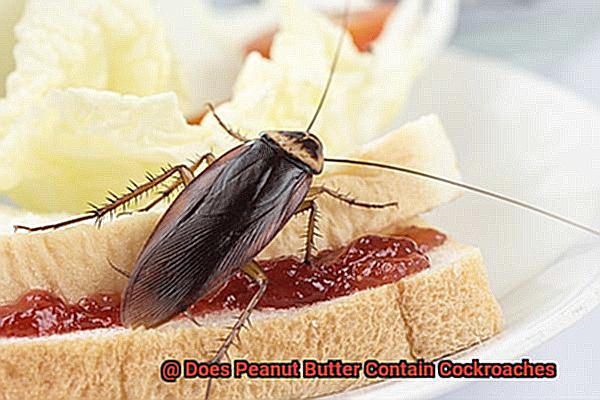
While it’s reassuring to know that reputable peanut butter manufacturers take these quality control measures seriously, it’s important for consumers to also take precautions. Always check expiration dates and properly store peanut butter to prevent spoilage and potential contamination.
Is it Possible for Cockroaches to be Present in Peanut Butter?

One question that comes up time and again is whether cockroaches can be present in peanut butter. The unfortunate truth is that it’s entirely possible.
Cockroaches are notorious pests that can infest food products, including peanut butter. They’re attracted to foods high in protein, fat, and sugar, all of which are present in peanut butter. These pesky insects can easily enter food processing and packaging facilities and contaminate products during production or storage.
Cockroach contamination in peanut butter poses a severe health risk to consumers as they can carry bacteria and pathogens that cause diseases like salmonella and E. coli.
Food manufacturers have strict regulations and protocols to prevent pest infestations and ensure product safety and quality. Despite these measures, incidents of cockroach contamination in peanut butter have been reported in the past, leading to product recalls and consumer alerts.
But don’t worry; there are ways to protect yourself from buying contaminated peanut butter. Firstly, check the packaging for damage or tampering before making a purchase. Then be sure to inspect the product for any signs of pests or debris before consuming it. Finally, store your peanut butter correctly to prevent pest access.
Potential Health Risks from Consuming Cockroach-Contaminated Peanut Butter
It’s crucial to be aware of the potential health risks associated with consuming cockroach-contaminated peanut butter. Cockroaches are notorious carriers of harmful bacteria, such as Salmonella and E. coli, which can lead to food poisoning and other illnesses. Just imagine biting into your favorite peanut butter sandwich and falling ill due to the bacteria that cockroaches carry. It’s not a pleasant experience.
However, that’s not all there is to it. Cockroach feces and body parts can also contaminate peanut butter, which can be especially concerning for individuals with allergies to cockroach allergens. Even small amounts of these allergens from contaminated peanut butter can trigger an allergic reaction, leading to discomfort and sometimes even emergency medical attention.
To make matters worse, cockroaches are known to carry parasites such as tapeworms that can be transmitted to humans through ingestion of contaminated food. This can lead to various health problems like abdominal pain, diarrhea, and weight loss. You don’t want to risk getting sick from something as simple as eating peanut butter.

Fortunately, there are some simple precautions you can take to reduce the risk of consuming cockroach-contaminated peanut butter. Storing peanut butter in airtight containers and inspecting it for any signs of contamination before consuming it is essential. It’s also advisable to avoid purchasing peanut butter from stores with visible signs of pest infestation.
Remember, not all peanut butter is contaminated with cockroaches or their byproducts. However, taking necessary precautions and being aware of the potential health risks associated with consuming cockroach-contaminated peanut butter can help you enjoy your favorite spread without any unnecessary risks.
Sr4gKDeM1wc” >
Conclusion
In conclusion, it’s understandable that many people may be worried about whether or not peanut butter contains cockroaches. However, before jumping to any conclusions, it’s important to consider the facts.
Even though cockroaches are attracted to peanut butter due to its high levels of fat, protein, and sugar, reputable manufacturers go through extensive measures to ensure their products are free from contamination by insects or other pests. Additionally, the FDA has strict guidelines in place to regulate the maximum levels of insect filth and other natural contaminants allowed in various foods.
Despite these precautions, there have been incidents of cockroach contamination in peanut butter in the past. Cockroach infestations can occur during production or storage and pose a severe health risk to consumers as they can carry harmful bacteria and allergens.
To protect yourself from potential health risks associated with consuming cockroach-contaminated peanut butter, it’s crucial to inspect packaging for damage or tampering before making a purchase. Be sure to check products for any signs of pests or debris before consuming them as well. Properly storing peanut butter in airtight containers is also essential.

